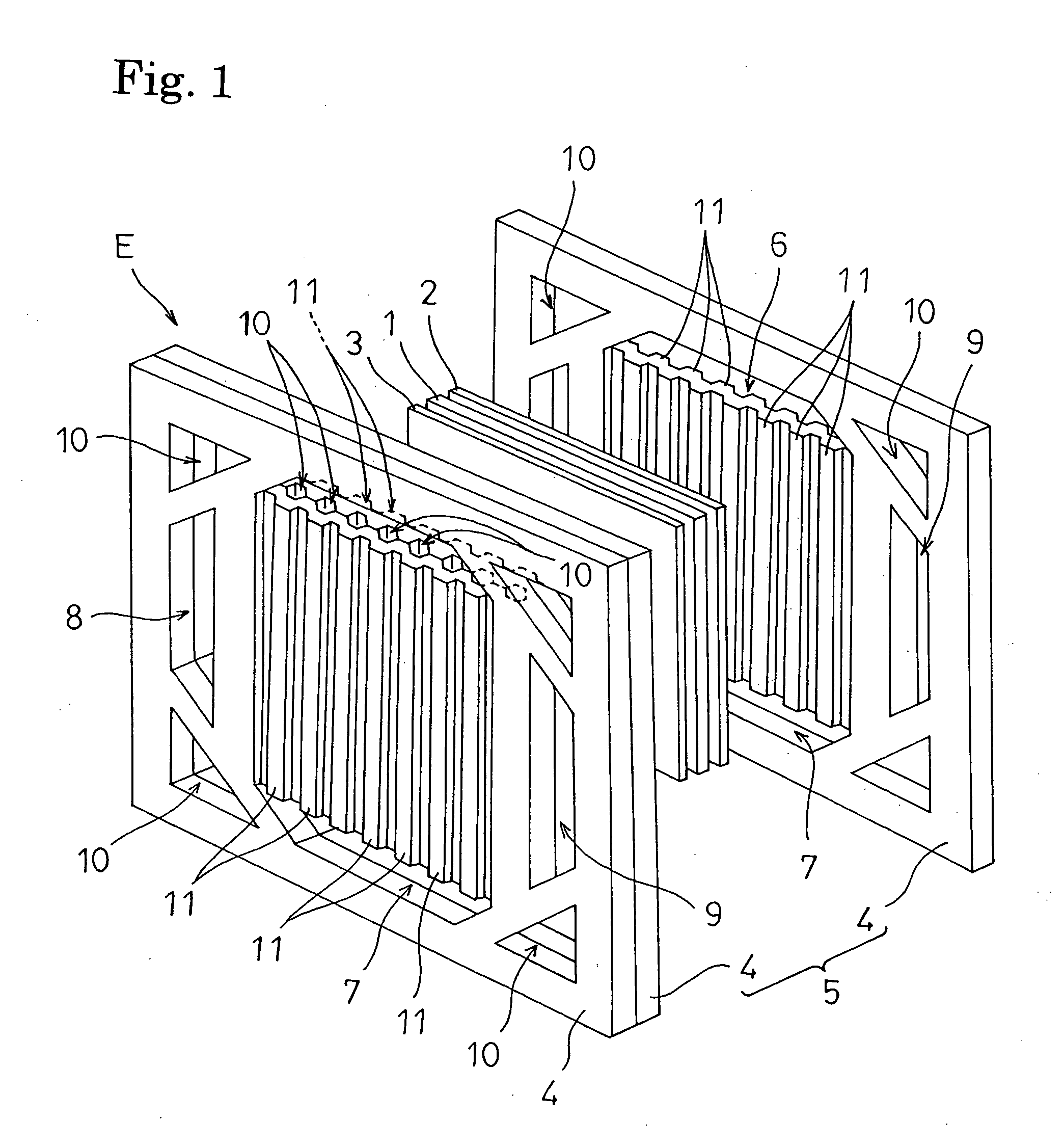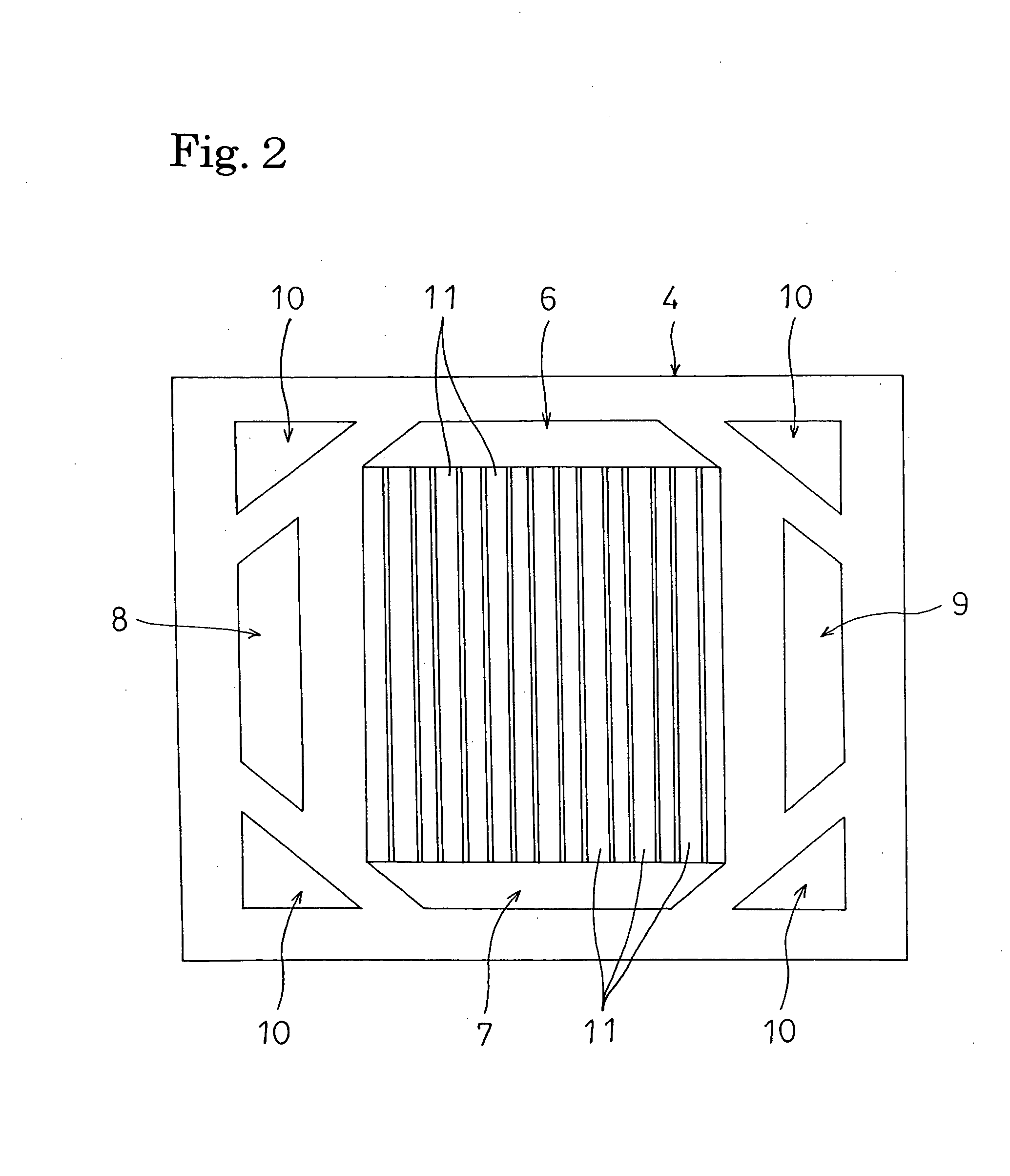Separator for Fuel Cell and Process for Producing the Same
a fuel cell and separator technology, applied in the direction of cell components, final product manufacturing, sustainable manufacturing/processing, etc., can solve the problem of gasses easily passing through, and achieve the effects of less dispersion, excellent mechanical and electrical characteristics, and excellent moldability
- Summary
- Abstract
- Description
- Claims
- Application Information
AI Technical Summary
Benefits of technology
Problems solved by technology
Method used
Image
Examples
embodiment 1
[0045]First, the configuration and operation of a solid polymer electrolyte fuel cell comprising the separator of the invention will be described briefly with reference to FIGS. 1 to 3. The solid polymer electrolyte fuel cell E is configured into a stack structure in which plural unit cells 5 each configured by: an electrolyte film 1 which is an ion exchange film formed by, for example, a fluorine resin; an anode 2 and cathode 3 which are formed by carbon cloth woven with carbon fiber threads, carbon paper, or carbon felt, and which sandwich the electrolyte film 1 from the both sides to function as gas diffusion electrodes constituting a sandwich structure; and separators 4, which sandwich the sandwich structure from the both sides are stacked, and current collector plates which are not shown are placed in both ends of the stacked cells.
[0046]In peripheral portions of the separators 4, as shown in FIG. 2, fuel gas holes 6, 7 containing hydrogen, oxidation gas holes 8, 9 containing o...
PUM
| Property | Measurement | Unit |
|---|---|---|
| bending strain | aaaaa | aaaaa |
| temperature | aaaaa | aaaaa |
| particle diameter | aaaaa | aaaaa |
Abstract
Description
Claims
Application Information
 Login to View More
Login to View More - R&D
- Intellectual Property
- Life Sciences
- Materials
- Tech Scout
- Unparalleled Data Quality
- Higher Quality Content
- 60% Fewer Hallucinations
Browse by: Latest US Patents, China's latest patents, Technical Efficacy Thesaurus, Application Domain, Technology Topic, Popular Technical Reports.
© 2025 PatSnap. All rights reserved.Legal|Privacy policy|Modern Slavery Act Transparency Statement|Sitemap|About US| Contact US: help@patsnap.com



